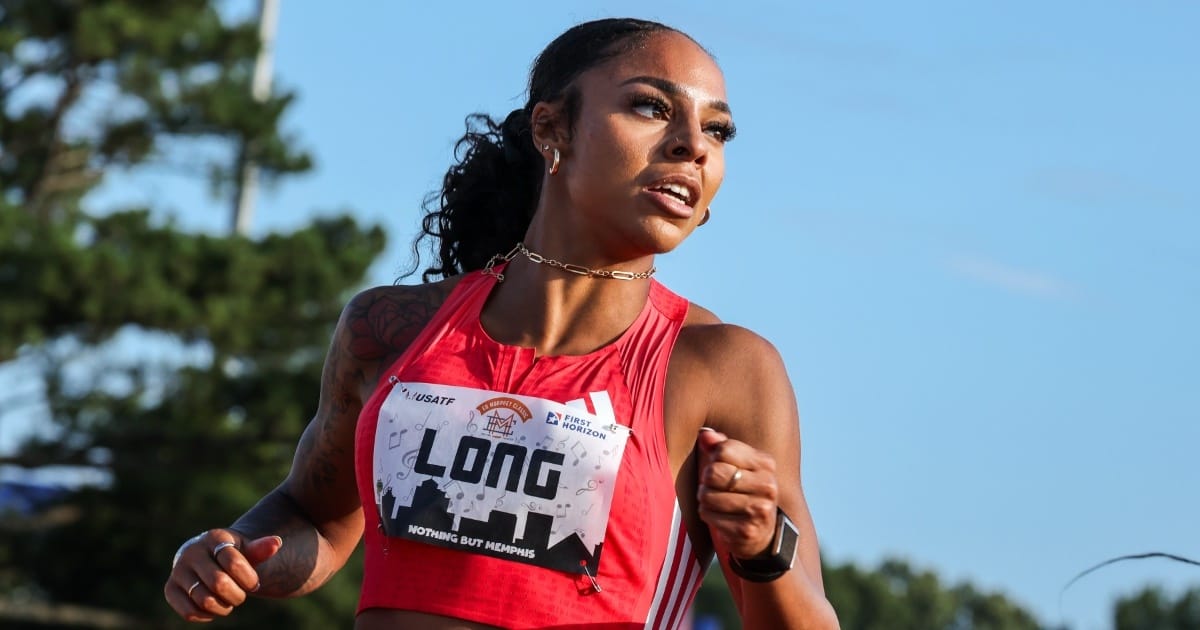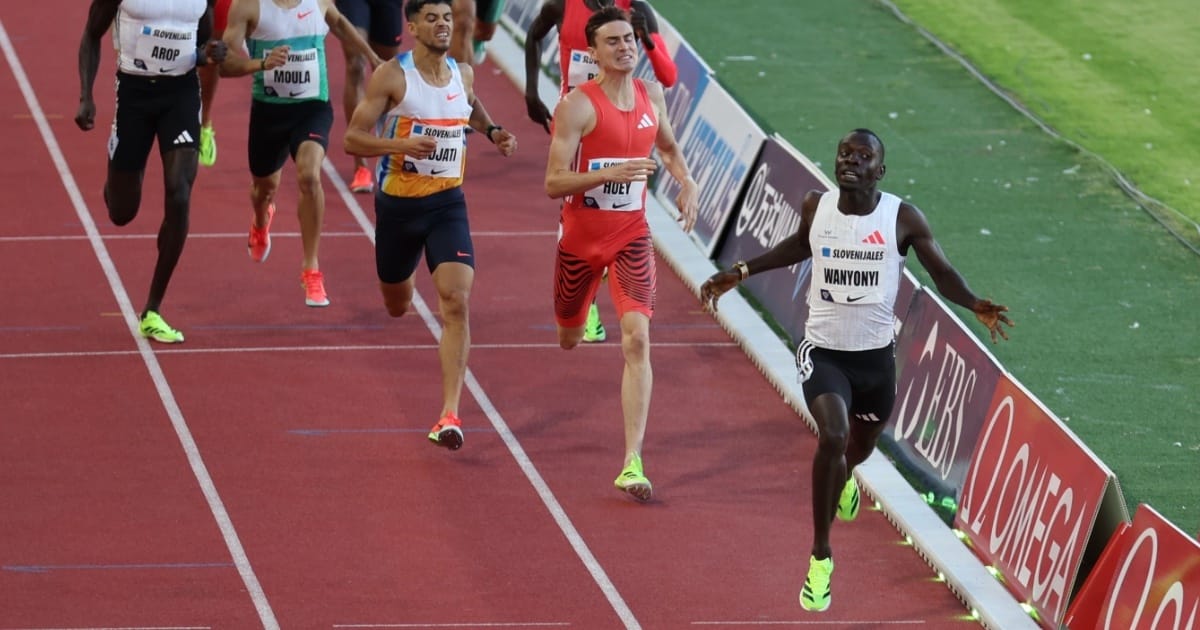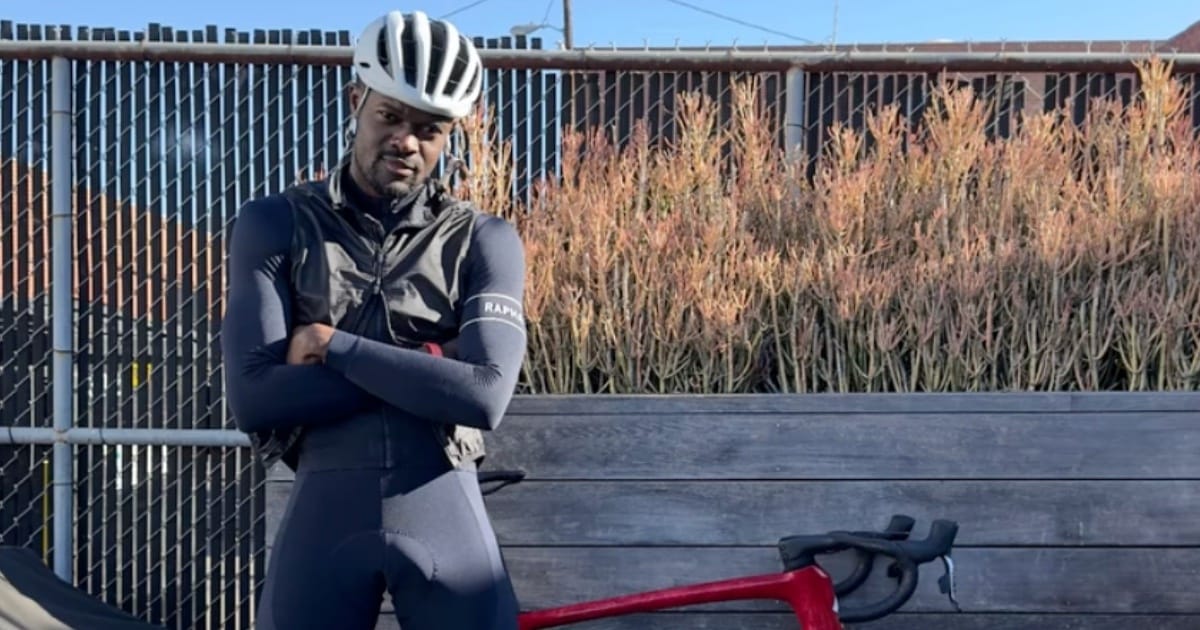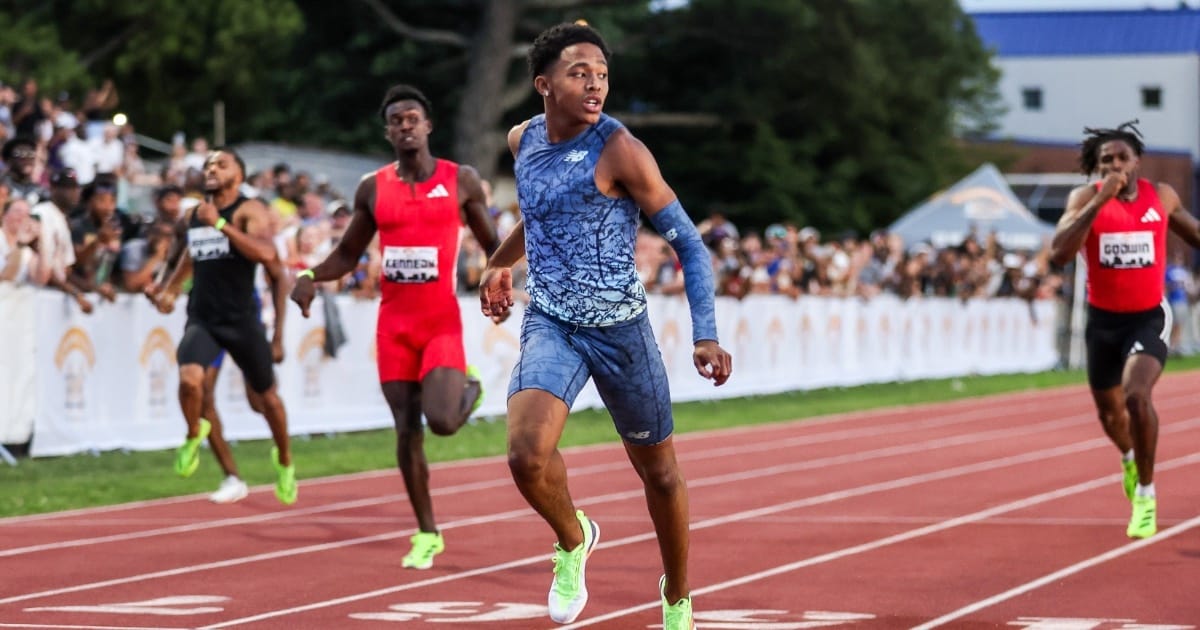- The Lap Count
- Posts
- Mid-Season Vibe Check ⏱️
Mid-Season Vibe Check ⏱️
Lap 229: Sponsored by Beekeeper Coffee & Olipop
Sponsored by Beekeeper Coffee
If you’ve been listening to Eric and Aisha’s hit podcast, you know they’ve been caffeinated and powered by Beekeeper Coffee. Try their delicious cold brews made from premium Honduran beans and a drop of pure organic honey sourced from TrackTown USA (Eugene, Ore.) - they are available in four latte flavors - Vanilla, Mocha, Caramel and Horchata - as well as a Black cold brew. Follow them @beekeepercoffee. Get 25% off your online orders at BeekeeperCoffee.com or on Amazon using code CITIUS25.
Compiled by David Melly and Paul Snyder
Two Weeks Out From USAs, The Picture’s Growing Murkier 😶🌫️

McKenzie Long | Photo by Kevin Morris / @kevmofoto
🎶
Noah Lyles, Abdi Nur, ‘Licia Monson, B. Miller
Isaac Updike, Dad Drew Hunter, McKenzie Long
T’Mars doubles, Athing struggles, Meg H. looks strong
🎶
We’d continue contorting athlete names to fit the cadence of Billy Joel’s “We Didn’t Start the Fire,” but it’s a deeply annoying song and reader, you deserve better. However, we needed an intro that hinted at the chaotic mental state we’re in now that the bulk of season’s “last chance” meets are behind us. As we set the discursive table for Eugene, some events are coming into sharper focus, but way more have only grown trickier to get a read on.
Of the three U.S. women who have won global medals in the 800m still actively competing—Athing Mu-Nikolayev, Ajeé Wilson (second-place at the Ed Murphey Classic in 1:59.53 behind Paris Olympics fourth-placer Shafiqua Maloney), and Raevyn Rogers—plus last year’s Paris 800m roster, Nia Akins, Juliette Whittaker, and Allie Wilson, there’s a real possibility none of the six are on the team for Tokyo.
The standard disclaimer applies: count any of them out at your own peril. Rogers and Wilson are enjoying resurgent seasons, having both run 1:58 after not breaking two-minutes last year at all. Mu-Nikolayev appears to be trending in a positive way (she went 2:00.42 at Ed Murphey). But 21 American women have dipped under 2:00 so far in 2025, and a new wave of rising stars—like Meghan Hunter and Maggi Congdon, who went 1-2 at the Sunset Tour in their pro debuts—is beginning to crest.
Not to suggest that the Monaco Diamond League Meet is in any way an American last-chance-style affair, but Noah Lyles made his ostensible season debut there (early season 400m notwithstanding), winning the 200m over rival Letsile Tebogo into a headwind in 19.88. Alright! Lyles is back. Kenny Bednerek never left. Though he’s been awful quiet this season, surely we assume Erriyon Knighton will step up and secure his standard 200m third-place finish? Wrong! Because after a substandard meet at NCAAs, T’Mars McCallum went and ran a world-leading 19.73 at Ed Murphey. (For good measure, he won the 100m, too, in 9.87.)
McKenzie Long similarly popped off a killer 100m-200m double at Ed Murphey, running 10.88 with a healthy tailwind, and posting a valid world #2 mark of 21.93. Between this performance and Melissa Jefferson-Wooden’s season-long 200m breakthrough, we don’t get to coast into USAs talking about the 200m being Gabby Thomas’s to lose. Julien Alfred has put up the fastest 200m in the world this year—21.88—then it’s Long, Thomas, JaMeesia Ford, and Jefferson-Wooden right behind her. The 200m is shaping up to be one of the most exciting races at USAs, and an unfortunate embodiment of the truism that “somebody is gonna miss out on the U.S. team who could definitely be a global medalist.”
Speaking of: with Kenneth Rooks laying an egg in Monaco (8:28.23 for 15th,18 seconds back from compatriot Matt Wilkinson), Isaac Updike being the picture of consistency, and James Corrigan somewhere in the mix, could the reigning Olympic silver medalist miss out on qualification? That’s hardly the only new question looming over a distance event.
Can Alicia Monson qualify for Tokyo? The American record holder raced for the first time since February of 2024 at Sunset, going 15:01.63 for sixth. Is two more weeks of healthy running enough for her to run under the World standard of 14:50 in Eugene, while outdueling the 10 or so other women realistically vying for a podium finish? Could Josette Norris—fresh off a commanding 4:00.10 1500m win in L.A.—make her first outdoor U.S. team in a wide-open 5000m where she’s finally a favorite? It feels insane to ask given the state of the event, but has notorious training super-responder Abdi Nur (13:34.86 to win the Sunset B heat) shown enough to suggest he could contend for his fourth straight U.S. team, knowing he’d likely have to take down one of Grant Fisher, Nico Young, or Graham Blanks, all of whom are on absolute heaters?
With the action in Eugene kicking off on July 31st, some very messy data, performance-wise, and lots of time to overdo it on the analysis, we’re staring down the barrel at Schrodinger’s track meet, where any outcome remains possible, and last week’s sure-thing is now an intriguing mystery.
Will The World Record Fall In The 800m This Year? 🗓️

Emmanuel Wanyonyi | Photo by James Rhodes / @jrhodesathletics
Heading into last week’s Herculis Monaco Diamond League meet, all eyes were on the men’s 800m, and with good reason: the field featured the Olympic champion, the World champion, the World Indoor champion, and all eight finalists from the Paris Olympics.
That crowd also represents the third, fourth, fifth, sixth, and seventh fastest men of all time, and rumors swirled that the quality of the competition and a pacesetter tasked for 49-low through 400m meant that the world record was at risk on Monaco’s historically fast time. When we polled the CITIUS socials as to whether David Rudisha’s mythical 1:40.91 mark would finally fall, 33% of our followers thought it would (the other two-thirds were more skeptical).
The race itself got off to a hot start, with Emmanuel Wanyonyi hitting the break right on the pacer who did take the field through in 49.21. Marco Arop and Mohamed Attaoui, notably, wanted none of the pace early. The 2023 World champ and the winner from the Paris DL went straight to the back, giving themselves a lot of work to do through the crowded field over the second lap. Arop was more successful, moving up to fifth in a season’s best 1:42.73, but Attaoui never quite got in the mix.
Up front, Wanyonyi stayed clear of the field for pretty much the entire race, taking the win (his third straight and sixth of eight races in 2025) in a meet record and world lead of 1:41.44. That’s an incredible time, but ultimately, Wanyonyi’s PB of 1:41.11 and the WR itself were never truly threatened.
With every passing race, it becomes more and more clear just how special an athlete David Rudisha was. Rudisha’s legacy will forever be defined by his epic front-running in the 2012 Olympic final, but let’s not forget that his performance in London was his third time breaking the world record, after lowering Wilson Kipketer’s 1:41.11 mark twice in 2010.
In addition to winning four of the five global championships between 2011 and 2016, Rudisha also posted the six fastest times in the world run between 1997 and 2024 (and nine of the top 11, with two of those performances belonging to Nigel Amos, who wrapped up a three-year doping ban last Friday). In the post-biological passport, pre-super shoes era, Rudisha was truly a one-of-one athlete, capable of performances that were literally leaps and bounds ahead of everyone else.
But time (and bicarb technology) marches onward. The 13 fastest 800m performances since Rudisha’s 2012 world record were all run in either 2024 or 2025, and eight of those 13 were clocked by either Emmanuel Wanyonyi or Marco Arop. The most dramatic of their showdowns also came in an Olympic final, where 1/100th of a second decided gold (Wanyonyi, 1:41.19) and silver (Arop, 1:41.20). Twelve days later, they matched up again in Lausanne, where Wanyonyi further lowered his PB to 1:41.11, tying Kipketer at #2 all-time.
Setting aside the why of it all (technology, talent, time, etc.), it’s clear that for the first time in a decade or so, there’s a legitimate chance someone—probably Wanyonyi, but not definitely—can take down Rudisha’s mark. But what will it take, and why hasn’t it happened yet?
We may not have David Rudisha. But what we might be able to do is recreate him in the aggregate. Breaking down these four races—the 2012 Olympic final, the 2024 Olympic final, the 2024 Lausanne DL, and the 2024 Monaco DL—is instructive. In the WR race, Rudisha hit 400 meters in 49.28 to give himself a shot at getting under the 1:41 barrier. That was actually a slower opening lap than his first two world records of 1:41.09 and 1:41.01, where he came through (with the help of rabbits) closer to 49-flat. Regardless, it’s clear that Rudisha and a 49-second opener was a record-setting recipe.
In Paris, Wanyonyi did his best Rudisha impression, leading the final nearly gun-to-tape, but he only hit halfway in 50.28. Having Arop challenging him all the way down the homestretch pushed him to impressively even splits for an 800m with a second lap of 50.91, but there was no way he was challenging the ghost of Rudisha (who is still very much alive, only 36 years old, and has technically not retired yet, to be clear) without a faster opener.
In Lausanne, the pacer hit 400m with Arop on his heels, but Wanyonyi was a stride or two back and reeled in Arop over the second lap. In that race, by the way, Arop “only” ran 1:41.72 but with way more distance traveled, passing the pacer on the outside of the turn in the second lap and letting Wanyonyi pass on his inside 200 meters later. In Monaco last week, Wanyonyi was right on the pacer this time around 49.3, but he did a lot of solo running in the second lap with Arop buried deep in the pack and no one on his shoulder.
There’s no guarantee that 1:40.91 will fall this season by any means, but if it does, it seems highly likely that three ingredients need to be in place: a 49.low first lap, a fit Emmanuel Wanyonyi, and a fit Marco Arop both near the front of the field for the entire race. When and where that happens—the Tokyo World Championships, the Diamond League final, or somewhere else entirely—remains to be seen, but without that trifecta, Rudisha’s name will stay atop the all-time list for a little while longer.
Sponsored by Olipop
From the rink to the can, some things just stick with you. 🏒🦆
Joshua Jackson’s OLIPOP Soda Story is a throwback to those post-practice moments when cracking open a cold soda was the move. Now? He’s found his new go-to: Doctor Goodwin. Same nostalgic vibe, 2–5g of sugar. Turns out, the power of taste + memory is real, and every sip still hits like a game-winning goal.
Give that flavor and all the rest a try at DrinkOlipop.com and use code CITIUS25 for 25% off all orders. The best Olipop deal on the internet!
What Can Track And Field Learn From The Tour De France? 🚴♂️

Rai Benjamin | @kingben on Instagram
It must be July, because the sport everyone is talking about is… you guessed it, professional cycling.
The Tour de France answers the question no one was asking: “What if the Boston Marathon was three weeks long, and there were four races within the race, and also Americans mostly sucked at it?” The answer, somewhat confoundingly, is that it would be way more popular.
Reports vary widely as to how many people actually watch the Tour de France, but the general consensus is that it’s the second- or third-most watched sporting event in the world, behind the Olympics and the soccer World Cup. Which is crazy, because on paper it should be way more boring than the average track meet. It’s a 21-day, 100+ hour race featuring a predominantly European field of athletes, only about ten of whom will actually factor into the race’s four big prizes after the first week.
And yet, it’s wildly popular and crossover fans consistently remark about how much more compelling the average cycling broadcast is than even the best televised road race. Which means it’s worth contemplating what running can learn from cycling’s annual moment in the sun.
So what exactly does the Tour do so well that track and field could do better?
Tell stories about people, not technology.
Modern cycling is a sport that runs on cutting-edge technology. Every one of the 180 or so riders in the Tour is riding a five-figure bicycle fitted with a high-tech computer, fueling with laboratory-produced drinks and gels, and wearing another couple thousand dollars of apparel. And yet, TV broadcasters are rarely preoccupied with any of that, only occasionally referencing advancements in tech as a comparison to “the good ol’ days” or to kill a few minutes during a particularly uneventful stage.
Compare that to track and field media, where we’re obsessed with the nuts and bolts of performance. Every breakthrough performance comes accompanied by asterisks about shoe plates, or pacing lights, or bicarb mixtures. Track and field fans seem determined at times to let the science of running overwhelm its soul. Not only is it too boring and nerdy for the casual fan; it detracts from the most emotionally resonant part of the sport: the athletes actually wearing all the tech.
Who you root for in cycling is truly dependent on your perception of the athletes’ strengths, personalities, backstories, and narratives. Jonas Vingegaard, the 2022 and 2023 champ, was the epitome of the steely-cold Goliath who everyone wanted to take down—until he got in a terrible crash three months out from the 2024 Tour and the angle flipped to Jonas, the scrappy underdog on the comeback, taking on a seemingly-invincible Tadej Pogačar. “Pogi” is, on paper, an easy villain as the top cyclist in the world bankrolled by the wealthiest team, but his goofy media presence, “shark fin” hair, and sweet relationship with fellow cycling pro Urška Žigart humanize and endear him to legions of fans. But when picking sides in the Grand Tour’s grandest rivalry, no cycling fan is ever asking “but what shoes is he pedaling with?”
Lean on the visual experience.
Another cool thing the Tour does: top riders are given special jerseys to wear throughout the event. The yellow kit (pink in the Giro D’Italia and red in La Vuelta) is a dramatic and indelible image associated closely with a Grand Tour’s visual brand—and it’s easy to spot in a crowd. Any previous world champ—no matter how presently washed—gets to wear a kit with a rainbow armband. National champions get to wear special kits as well. The U.S.’s star-spangled version (plus its owner’s absurd hair-and-mustache combo), is particularly striking.
In track and field, sponsors have trotted out special singlets for reigning World and Olympic champs before, but without some level of coordination between sporting goods companies, or a mandate from World Athletics, we’re not getting something as cool as cycling’s earned kit system. And beyond that, the cycling world has embraced something the track and field community has yearned for for years: bright, visually distinct team kits making it easy to pick out aligned riders in a crowd, unlike the sea of identical Nike and adidas kits that often take over Diamond League races.
There are two critical visual elements the Tour offers that track and field can’t easily crib, however: the French countryside and dramatic crashes. The most aesthetically pleasing part of and the potential for a high-speed crash is an unenviable, but unavoidable, element of peloton racing that adds inherent tension to any bike race. We can’t really recreate those elements organically in track and field, but the lesson here is that packaging a long, monotonous event alongside aesthetically pleasing and/or exciting visuals certainly helps add allure.
Don’t shy away from negativity.
Netflix’s popular Unchained docuseries, which has the same producers as SPRINT and just dropped its third and final season last week, is a fantastic companion product for the burgeoning cycling fan. It succeeds fully where SPRINT does only partially. And a big part of that is that, frankly, cycling is full of petty drama and whining.
Unchained spends a lot of time talking about the gulf between the haves and have-nots of cycling teams and the challenges of riding on a small budget. It features shouting, finger-pointing, and tears when a race goes poorly. It’s full of French-accented expletives—both in joy and in frustration—from the mouths of the coaches driving alongside their athletes at arguably-unsafe speeds. Unlike track and field, cycling media appears to feel no burning desire to always be positive and inspiring, and as a result, it feels more real (the big exception of course, being any discussion of the impact doping has on the sport, which is glazed over fairly quickly in the series).
Ultimately, making track and field more similar to cycling feels like a fool’s errand. The closest we could conceivably come in form would be a multi-day, hundreds-of-miles-long, team-based trail race. Stage-based ultras do exist, like the Transrockies Run, but like the majority of events in the trail and ultra world, it’s hardly optimized for viewership.
The more valuable lessons here are not about the format of the race itself, but the framing. Cycling insists upon its own value and cultural identity, embracing all the things that make it unique. Its broad popularity instead hinges on centering universal elements: the excitement, drama, and beauty of the event and the athletes contesting it… which exist in one form or another on a red oval in Eugene, Oregon, as well as deep in the French Alps.
More News From The Track And Field World 📰

Quincy Wilson | Photo by Kevin Morris / @kevmofoto
– This weekend’s London Diamond League marks the return of 2019 World champion Donavan Brazier to the circuit, competing in his first DL race in three years. Unfortunately, Keely Hodgkinson and Jakob Ingebrigtsen, while both initially announced for the meet, have withdrawn. Stay tuned to the CITIUS MAG newsletter for a full preview of the meet, out Thursday.
– The logo for the 2026 World Cross Country Championship has been revealed, and while it’s nice, we prefer the design we came up with.
– Leading from the gun and never relinquishing control of the race, Amanda Vestri (18:29) took home the win at the U.S. 6k championships. Finishing behind her in Canton, Ohio, was Annie Frisbee (18:36) then Fiona O’Keefe (18:38). No word on whether any members of the podium visited the William McKinley Presidential Library while in town.
– John Korir (42:44) and Veronica Loleo (49:37) were your Utica Boilermaker 15K champions. Now for our annual reminder that Utica, New York, is the birthplace of some terrific, regionally-specific Italian American dishes, like Utica greens and chicken riggies.
– Posted just hours after we scheduled last week’s newsletter, we regret the extraordinarily late acknowledgement that, like his former Tarheel training partner Ethan Strand, Parker Wolfe has signed with Nike and is heading to Flagstaff to work with Mike Smith as part of Swoosh TC.
– School’s out for the summer, but the Quincy Wilson show is year-round: the 17-year-old, who earned an Olympic gold medal before a high school diploma, defeated a largely-professional 400m field at the Ed Murphey Classic to set a new PB and break his own U18 world record, running 44.10.
– To balance out this newsletter’s scratching news karma, Keely Hodgkinson has officially signed on to race at this year’s Athlos NYC meet, set for October 10th!
– After completing a three year suspension—for three whereabouts violations, coupled with some doctoring of emails—Randolph Ross raced again for the first time in Marseille, finishing second in the 400m in 45.41.
– Congratulations are in order for marathoning now-mom Jordan Hasay, who gave birth to her son Micah over the Fourth of July weekend!
Interested in reaching 20,000+ dedicated runners and track and field fans? Advertise with us here.
On a scale of 1-5, how much did you enjoy this week's newsletter? |


Reply